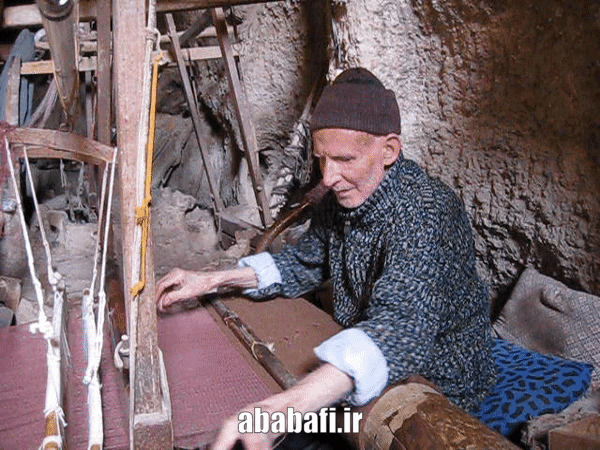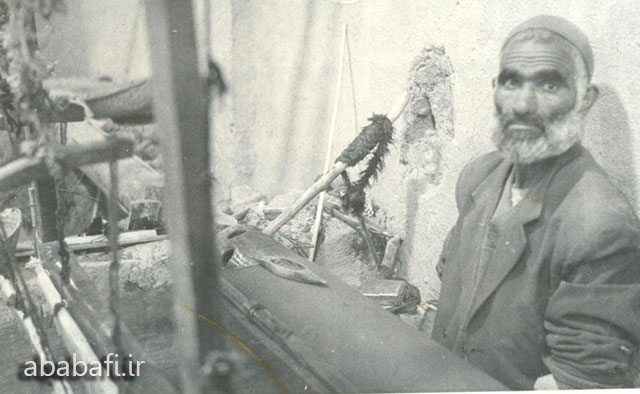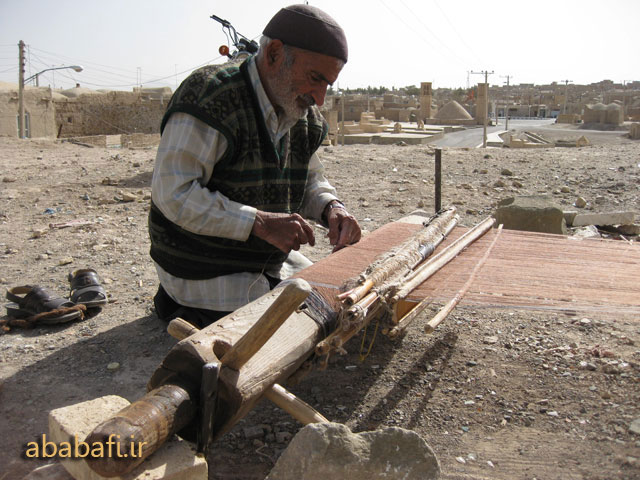Hand woven carpets
usually house wives do the carpet job
Handmade products in Naein are very important. Weaving carpets, a
fine art, began in Naein about the time of World War II. Because carpet weavers
from Naein worked with thinner wools, they began to weave rugs
of much higher quality. Since the number of carpets produced was low and the
quality of carpets was exceptionally high, the weavers found a profitable
market. Carpet-weaving in Naein has a history of applying non-Iranian wools and
of using local, traditional designs with unique coloring, thus drawing the
attention of the world market to Naein. Naein’s carpets are woven in diverse
places in Iran, thanks to the advent of technology. Weavers throughout Iran can
weave any kind of carpet. But a prospective carpet buyer should consider that
the quality of the same kind of carpet, in different places, is different. Using
natural and traditional colors and dying techniques peculiar to the region
around Naein, carpet weavers in Naein can easily profess that they are some of
the best producers of handwoven carpet in all of Iran, and the world.
worked with thinner wools, they began to weave rugs
of much higher quality. Since the number of carpets produced was low and the
quality of carpets was exceptionally high, the weavers found a profitable
market. Carpet-weaving in Naein has a history of applying non-Iranian wools and
of using local, traditional designs with unique coloring, thus drawing the
attention of the world market to Naein. Naein’s carpets are woven in diverse
places in Iran, thanks to the advent of technology. Weavers throughout Iran can
weave any kind of carpet. But a prospective carpet buyer should consider that
the quality of the same kind of carpet, in different places, is different. Using
natural and traditional colors and dying techniques peculiar to the region
around Naein, carpet weavers in Naein can easily profess that they are some of
the best producers of handwoven carpet in all of Iran, and the world.

naein carpets
Naeen carpet is woven in divers places in Iran and this is because of the
high techniques carpet weaving domination in the country, which means that the
Iranians can weave any kind of carpet. But one should consider that the quality
of carpets in divers places is different from each other. From the point of view
of coloring, Naeen carpet is one of the symbols of using natural and traditional
colors which it owes a great portion of its popularity to that. The act of
coloring or dying in this region is done by natural and traditional colors which
has a little difference with other carpet weaving centers in Iran and in spite
of some chemical colors which are use as an aid, The natural colors are still
dominant in the region.

Hand woven carpets
The number of colors which are used in weaving carpet are
11 main colors and 4 subsidiary colors.
Carpet structure relies on mixture
and traditional style which are very accurate. Some deficiencies such as
curving, not applying stamen, starching, color mixing and wrong weaving in Naeen
carpet are very little and the quality of production is very high and it has a
top standard. Weaving devices are mostly made of wood and attempts has been done
to change the wood devices in to metal devices. Naeen can easily claim that it
is one of the best producer of hand woven carpets in Iran
سهشنبه 16 اردیبهشتماه سال 1393 ساعت 06:30 ق.ظ
 The ancient Rigareh–a qanat-based water mill–is located
in the Mohammadieh neighborhood.
The ancient Rigareh–a qanat-based water mill–is located
in the Mohammadieh neighborhood.





























